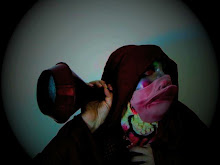 People are used to the sound of skin played by percussion instruments. Most of them consist of at least one membrane (skin) that is stretched over a shell and struck, either directly with parts of a player's body, or with some sort of implement, to produce sound. But what if the skin is human? Percussion denotes the collision of two bodies producing sound. Then what if both the two colliding bodies are human? This scenario is not a morbid fantasy but the core of the latest Daan Brinkmann's creation: Skinstrument. It's a musical instrument that can be played by two or more people. It works using skin resistance as a parameter to generate sound. Perceiving a subtle, almost imperceptible flow of electricity players become part of a circuit, and touching each other's skin the circuit starts to trigger a sound generation. It's crucial then that the touching intensity determines the sound frequency. So the electric tension is not only translated into sound but also into sexual tension, ironically inspired by the shape of the instrument that resembles a breast and instinctively generated by the touch of other people's skin. The result is an unpredictable choreography based on human interaction.
People are used to the sound of skin played by percussion instruments. Most of them consist of at least one membrane (skin) that is stretched over a shell and struck, either directly with parts of a player's body, or with some sort of implement, to produce sound. But what if the skin is human? Percussion denotes the collision of two bodies producing sound. Then what if both the two colliding bodies are human? This scenario is not a morbid fantasy but the core of the latest Daan Brinkmann's creation: Skinstrument. It's a musical instrument that can be played by two or more people. It works using skin resistance as a parameter to generate sound. Perceiving a subtle, almost imperceptible flow of electricity players become part of a circuit, and touching each other's skin the circuit starts to trigger a sound generation. It's crucial then that the touching intensity determines the sound frequency. So the electric tension is not only translated into sound but also into sexual tension, ironically inspired by the shape of the instrument that resembles a breast and instinctively generated by the touch of other people's skin. The result is an unpredictable choreography based on human interaction.Valentina Culatti













1 comment:
What a great invention! Makes me think of the bit from the Saul William's poem when he says we are 'beings of sound'. I like this idea that sound is not generated without the connection made to another. Such a great idea, thanks for bringing this to my attention.
Post a Comment